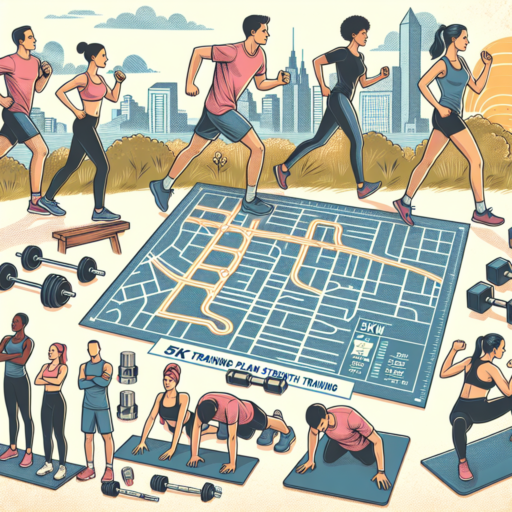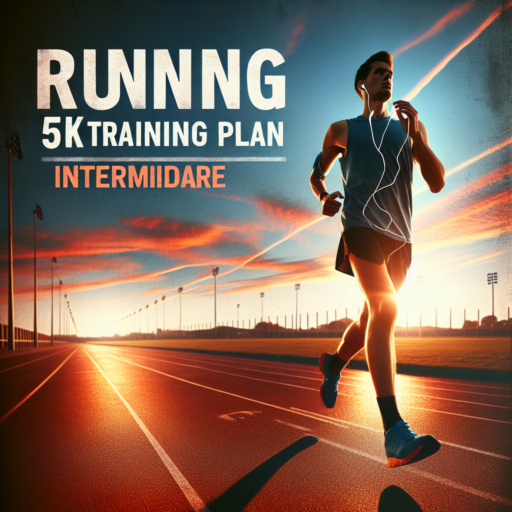How to train for a 5K advanced runner?
Training for a 5K as an advanced runner involves a nuanced approach to improve speed, endurance, and race strategy. Recognizing that you’re not starting from scratch, your training regimen should push your limits while integrating advanced techniques and workouts. Properly preparing for a 5K means balancing intensity with recovery to avoid injury and peak at the right moment.
Interval Training is a cornerstone for advanced runners looking to improve their 5K times. These sessions should focus on high-intensity intervals at a pace faster than your target race pace interspersed with recovery periods. For example, repetitions of 800 meters at a pace 5-10 seconds faster than your race pace, followed by 400 meters of light jogging or walking for recovery, can significantly enhance your speed and aerobic power.
Strength and Conditioning
Beyond just logging miles, incorporating strength and conditioning exercises into your routine can dramatically improve your running economy. Targeted workouts focusing on the core, legs, and glutes not only enhance performance but also aid in injury prevention. Plyometric exercises, such as jump squats and lunges, are particularly beneficial, offering improvements in power and efficiency.
What is an elite level 5K time?
Defining an elite level 5K time draws a picture of athletic prowess and dedication. This benchmark is a testament to the athlete’s speed, endurance, and strategic race planning. Typically, for men, elite 5K times can fall under the 13:00 to 14:30 minute range, while women’s elite times are often seen within 15:00 to 16:30 minutes. These times are achieved by professional runners who train rigorously and compete at the highest levels of track and field and road racing events.
The essence of achieving elite status in the 5K distance is not just about natural speed or endurance, but it’s also heavily reliant on consistent training, nutrition, and recovery processes. Achieving times that fall within aforementioned ranges requires a blend of high-volume and high-intensity training, strength conditioning, and sometimes altitude training to maximize aerobic capacity and running efficiency. This intensive preparation is critical for setting the stage for an elite performance.
Factors Influencing 5K Times
- Training Regimen: The specificity and intensity of the athlete’s training schedule are paramount. This includes interval training, long runs, and recovery periods.
- Genetics and Physiology: Natural athletic talent and physiological factors such as VO2 max play a significant role in determining an athlete’s potential for elite times.
- Race Conditions: External factors such as course layout, weather, and competition level can impact final race times.
Understanding what constitutes an elite level 5K time is crucial for both athletes aiming to reach these heights and spectators appreciating the magnitude of these achievements. It offers a glimpse into the dedication and sheer will required to excel in one of the most competitive distances in track and field and road racing.
No se han encontrado productos.
How do elite 5K runners train?
Training for a 5K as an elite runner involves a delicate balance between speed, endurance, and recovery. These athletes follow regimented training schedules designed to maximize their performance at every level. Understanding the components of their training can provide insights into what it takes to compete at the highest levels of short-distance running.
Intensive Speed Workouts
Speed workouts are a cornerstone of elite 5K training. These sessions might include intervals on the track, such as 400m repeats at a goal race pace, or hill sprints to build power and speed. The focus is on pushing the body’s limits in short, intense bursts, followed by brief recovery periods. This type of training helps improve VO2 max, which is crucial for sustaining a high pace over the 5K distance.
Endurance and Long Runs
While speed is essential, endurance cannot be overlooked. Elite 5K runners dedicate part of their training schedule to longer runs, extending up to 10-15 miles. These runs are slower, designed to enhance aerobic capacity, improve running economy, and increase the body’s efficiency in utilizing fat as a fuel source. Endurance days complement speed work by enabling athletes to maintain their pace throughout the entirety of the 5K race.
Tailored Recovery Strategies
Recovery is equally important as the workouts themselves in the training regimen of elite 5K runners. Active recovery, including easy runs or cross-training, is employed alongside passive recovery methods, such as massage, ice baths, or compression therapy. Nutrition also plays a key role, with a focus on replenishing glycogen stores and repairing muscle with a balanced intake of carbohydrates, proteins, and fats. Proper recovery ensures that athletes can return to their training sessions fully recovered, reducing the risk of injury and enabling consistent training progress.
Can I train for a 5K in 20 days?
Preparing for a 5K run in a mere 20 days may seem daunting, but it’s certainly possible with the right approach. Crafting a plan that balances running with rest periods is key. Initially, evaluating your current level of fitness is crucial. If you’re starting from scratch, the focus should be on gradual progression to avoid injury.
Building Endurance: Gradual increase in distance or duration is fundamental. Begin with short runs or brisk walks, progressively increasing the duration as your body adapts. Interspersing running with walking can help manage stamina while reducing the risk of overexertion.
Key Tips for Success
- Rest Days: Incorporate regular rest days to allow your body to recover.
- Hydration: Stay well-hydrated, especially on running days.
- Nutrition: Fuel your body with a balanced diet rich in nutrients.
Listening to Your Body: Awareness of your body’s signals is indispensable. Pushing through pain can lead to serious injuries, setting your training back. Alternatives, such as cross-training or adjusting the intensity of runs, can offer the flexibility needed to meet the 20-day goal without compromising health.




